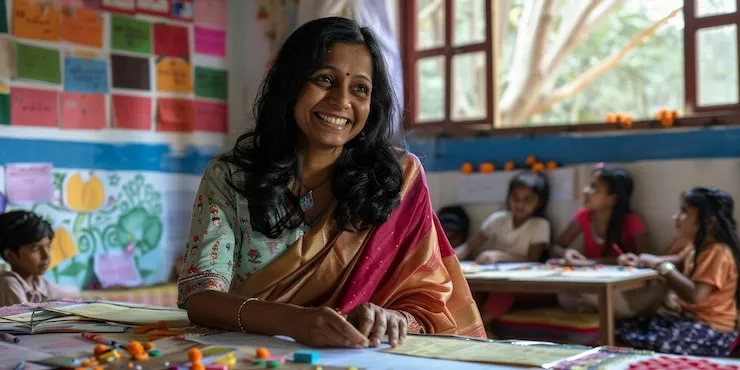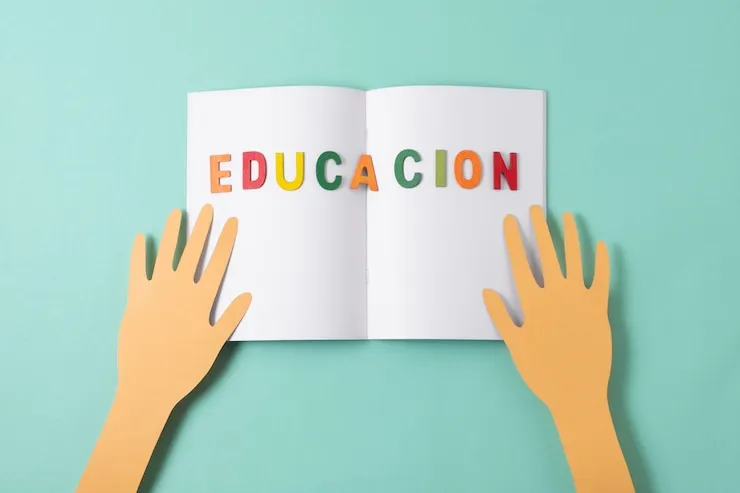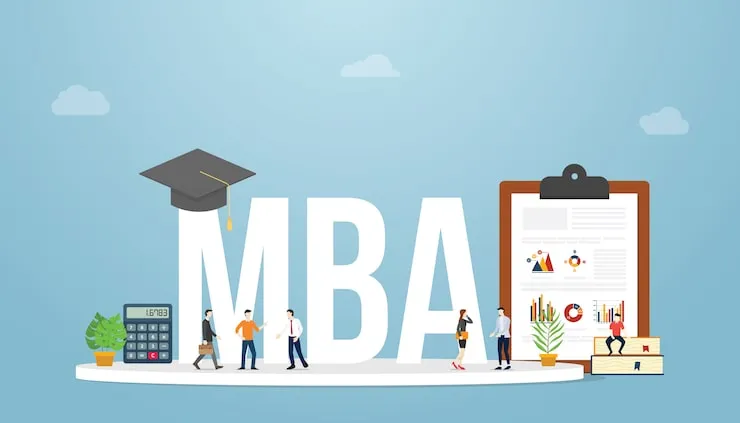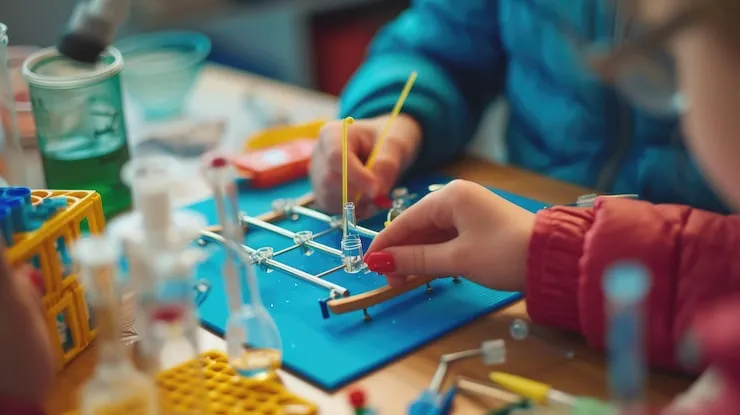In 2009, the Indian government implemented the Right to Education (RTE), which states in its original form that every child between the ages of 6 and 14 is entitled to free, high-quality education.
Here is highlighting: Private schools should keep their 25% seats apart for financially weak background students. Therefore, if a school has 100 seats in kindergarten, 25 of these go to children who cannot afford private school education otherwise. And yes, the school fee is refunded by the government.
Gujarat Sees Record Numbers in 2025–26

This year, Gujarat saw a wave of applications under the RTE portal. Over 1.1 lakh parents applied hoping for a better future for their little ones.
Out of those, 95,494 students were allotted seats in private unaided schools across the state. That’s one of the highest-ever RTE admission counts for Gujarat!
Quick Stats:
- Applications received: Around 1.10 lakh
- Admissions granted: 95,494
- Top districts: Ahmedabad, Surat, Rajkot, and Vadodara
For thousands of families, this announcement brought pure relief—and smiles.
Read Also: Mid-Day Meals & Health Schemes in Gujarat Schools: One Plate at a Time
How Does the Admission Process Happen?
Everything—from applying to receiving allotment—is now done online through the RTE Gujarat portal.
Here’s what parents usually do:
- Register Online: Fill out the RTE form on the official website.
- Upload Documents: Income proof, residence proof, child’s age certificate, and more.
- Select Preferred Schools: Parents list 5–10 private schools in nearby areas.
- Wait for the Lottery: If more kids apply than seats available, a digital lottery system selects names randomly.
- Get the Allotment Letter: If selected, parents take this to the school to complete admission.
Who Can Apply for RTE Seats?
Not everyone is eligible. The RTE quota is specifically for kids from families who face financial or social challenges. Children can apply if they belong to:
- Scheduled Castes (SC) or Scheduled Tribes (ST)
- Other Backward Classes (OBC)
- Orphaned or abandoned children
- Families Below the Poverty Line (BPL)
- Children of HIV-affected parents
- Kids of sanitation workers
- Children with special needs or disabilities
The government also sets annual income limits, which vary based on rural/urban categories.
Districts Leading the Way
Some parts of Gujarat have seen exceptional participation this year:
- Ahmedabad: No surprise here—highest number of applications and admissions.
- Surat: Strong awareness among working-class families.
- Rajkot & Vadodara: Consistent growth in RTE numbers year after year.
These cities are showing that when parents are informed, change happens.
Why This Matters More Than Ever?

Getting into a good school is a game-changer for kids. With 95,494 children getting access to private education, this move impacts:
- Literacy rates in rural and semi-urban areas
- Confidence of first-generation learners
- Future job opportunities and economic upliftment
- Social inclusion inside classrooms
It’s not just about textbooks—it’s about breaking cycles of poverty.
How Are Private Schools Handling This?
It hasn’t always been smooth sailing. Some private schools have had reservations about RTE, mostly due to late reimbursements from the government or lack of infrastructure.
But over time, many schools have started seeing the bigger picture.
In fact, several institutions now proudly share how RTE students have topped their classes, participated in Olympiads, or won sports awards.
Read Also: Ganesh Chaturthi Activity In School
Parents Are Becoming More Aware
A decade ago, not many families in rural Gujarat even knew about the RTE quota. Today, thanks to:
- WhatsApp awareness campaigns
- Local community volunteers
- NGO support
- Radio and TV promotions
Even those with limited digital literacy are managing to submit online forms with help from local centers or cyber cafes.
Still, Some Hurdles Remain
While the numbers are impressive, the system still isn’t perfect.
Here are a few challenges:
- Reimbursement delays to private schools
- Missing documents during verification
- Language and tech barriers for tribal families
- Lack of transport for students living far from schools
- Some schools allegedly denying admission even after allotment
The state education department is working to fix many of these, but constant monitoring and community support are needed.
What’s Changing in 2026 and Beyond?
The state is gearing up for even more streamlined RTE admissions next year. Here’s what to expect:
- Mobile app updates with real-time tracking
- More helpdesks in rural talukas
- Better school mapping tools for parents
- Strict audits to make sure RTE students aren’t treated differently
The goal? Zero discrimination and full access to quality learning.
Government's Role Is Key
The Gujarat Education Department has played an active role in running the RTE agenda. Officials have promised to improve transparency and keep schools responsible.
In addition, schools that refuse to RTE or abuse students may face serious punishment in the coming months.
Real Stories That Inspire
Let’s go beyond the stats. Behind those 95,494 admissions are stories that warm the heart:
- A widowed mother in Bhavnagar who broke down in joy after her son got into an English-medium school
- A tribal girl from Dahod who now dreams of becoming a doctor after getting her first school uniform
- A mason’s child in Surat who is now learning robotics in grade 2
Final Take: Education Is the First Step to Equality
This year’s RTE admissions prove something important—change is possible when systems work.
Thanks to the government’s digital efforts, NGO help, and parent awareness, nearly one lakh children now have a real shot at a brighter future.
Let’s keep that momentum going. Let's talk about it, share it and help more families search next year.
Because every child deserves a seat in the classroom - wherever they are born.













